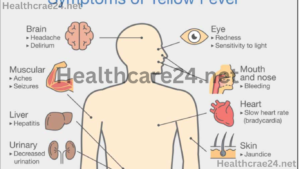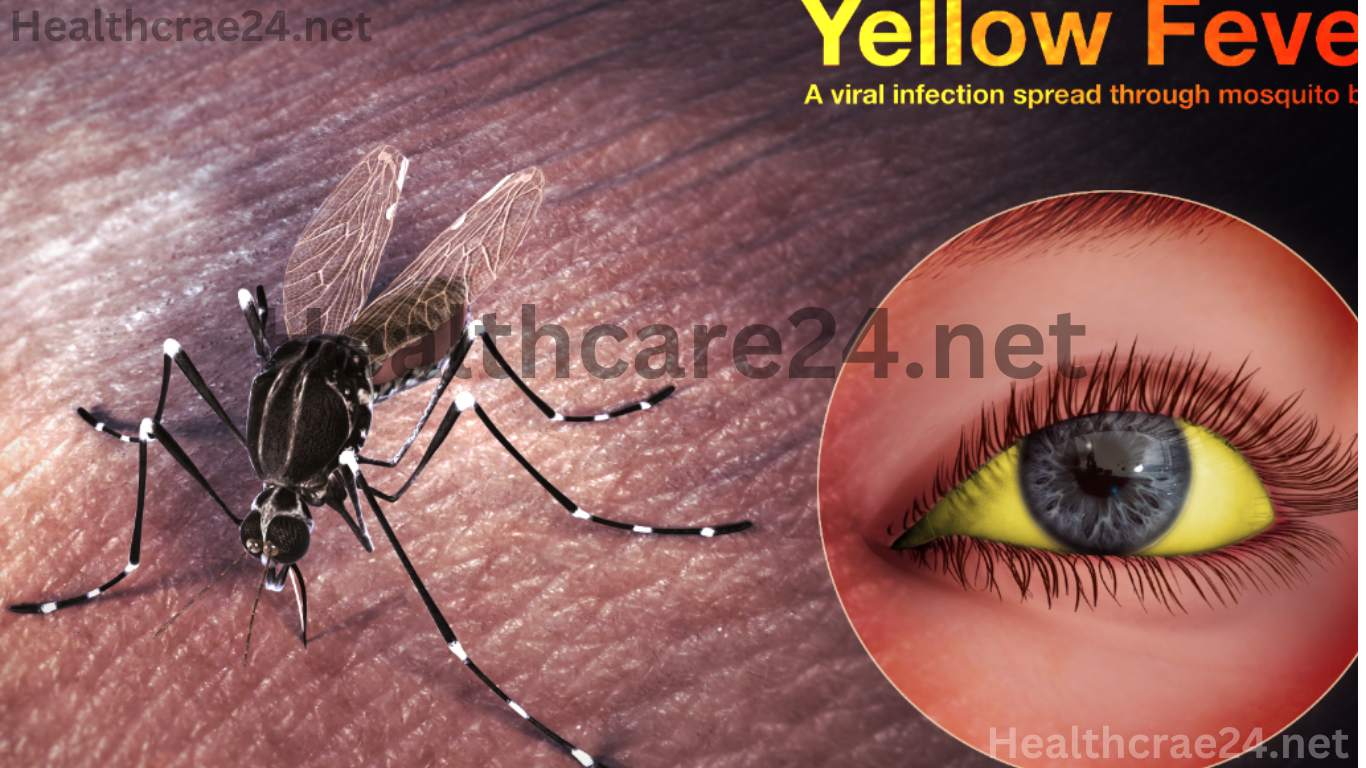-
- Introduction
- Understanding Yellow Fever
- Definition and Symptoms
- Historical Background
- Origins and Early Records
- Outbreaks and Impact Through History
- Transmission and Spread
- Global Impact
- Affected Regions
- Economic Consequences
- Prevention and Control
- Vaccination Programs
- Mosquito Control Measures
- Current Status
- Recent Outbreaks
- Efforts Towards Eradication
- Challenges and Future Outlook
- Yellow Fever vs. Other Diseases
- Comparison with Malaria and Dengue Fever
- Yellow Fever in Popular Culture
- Conclusion
- FAQs
Understanding Yellow FeverIn tropical parts of Africa and the Americas mosquitoes carry a virus that causes yellow fever. The illness gets its name from the symptoms, which include fever, muscle aches and jaundice (yellowing of the skin). Investigating yellow fever’s description, symptoms, historical context, transmission, worldwide impact preventative and control strategies, contrast with other illnesses and popular culture representations are all important to comprehending the illness.
Definition and Symptoms
The yellow fever virus which belongs to the Flaviviridae family is what causes yellow fever. Fever, chills, headache, muscle aches, nausea and loss of appetite are common symptoms. In extreme situations, patients may experience bleeding, jaundice, and organ failure, which can be fatal.
Historical Background
Origins and Early Records
It is very likely that yellow fever originated in Africa and traveled to the Americas via the slave trade. The Americas had its first known outbreak in the 17th century and following epidemics resulted in a considerable death toll.
Outbreaks and Impact Through History
Epidemics of yellow fever have had a significant impact on human history. The plague devastated port cities in the 18th and 19th centuries impeding trade and exploration. The first effective vaccinations were developed as a result of significant epidemics in the Americas.
Transmission and Spread
The main way that yellow fever is spread is by the bite of an infected Aedes or Haemagogus mosquito. Tropical forests are home to monkeys that carry the virus which humans can contract by visiting these regions. When infected individuals are bitten by mosquitoes urban transmission takes place.

Global Impact
Affected Regions
Periodic outbreaks of yellow fever are common in tropical regions of South America and Africa where the disease is endemic. In many regions the illness poses a serious threat to public health especially in rural areas where access to treatment is scarce.
Economic Consequences
Outbreaks of yellow fever can have detrimental effects on trade, tourism, and productivity. Additionally the illness may put a burden on healthcare systems, raising expenses and allocating resources more heavily.
Prevention and Control
Vaccination Programs
The most reliable method of preventing yellow fever is vaccination. In most cases, a single dosage of the yellow fever vaccine confers lifetime immunity making it both safe and extremely effective. Travelers to endemic areas are advised to get vaccinated in certain cases entrance into a country requires vaccination.
Mosquito Control Measures
Reducing the number of mosquitoes is essential to stop the spread of yellow fever. This include destroying mosquito breeding grounds using pesticides and putting in place neighborhood-based mosquito control initiatives.
Current Status
Recent Outbreaks
Yellow fever outbreaks continue despite control measures especially in Africa. Recent epidemics have brought attention to the necessity of ongoing immunization campaigns and mosquito control strategies.
Efforts Towards Eradication
In order to completely eradicate yellow fever research into novel control methods, enhanced surveillance and outbreak response and strengthened immunization programs are all being done. By 2026, yellow fever as a threat to public health is intended to be eradicated.
Challenges and Future Outlook
The introduction of novel strains, vaccine hesitancy and a limited supply of vaccines are obstacles to the control of yellow fever. Ongoing initiatives, however give optimism for the disease’s eventual eradication.
Yellow Fever vs. Other Diseases
Comparison with Malaria and Dengue Fever
Because of their comparable symptoms and mosquito-borne transmission, dengue fever and malaria are sometimes linked to yellow fever. On the other hand yellow fever has a separate virus that causes it as well as a different epidemiology and set of precautions.
Yellow Fever in Popular Culture
In popular culture yellow fever has been portrayed in music, movies and literature among other mediums. These depictions frequently take into account the disease’s historical effects as well as how it has shaped economies and communities.
The Impact of Yellow Fever on Society

Social Disruption
Yellow fever epidemics have frequently caused social unrest and left the afflicted people in a state of terror and panic. To stop the disease from spreading, quarantine laws, travel bans and public health campaigns have been put into place which has affected daily life and business operations.
Cultural Responses
Culture-specific customs and beliefs have also been impacted by yellow fever. Certain communities have connected the illness to paranormal origins which has led to the creation of customs and traditions meant to fend off the sickness.
Economic Impact
Yellow fever can have a large economic impact, especially in areas where the illness is endemic. Epidemics can have a negative impact on both people and governments by reducing tourism increasing healthcare expenditures and decreasing productivity.
Impact on Healthcare Systems
Outbreaks of yellow fever can put a pressure on healthcare systems, especially in places with limited resources. Hospitals and other healthcare facilities may find it difficult to treat a large number of sick patients which can create issues in providing quality care.
Public Health Response
The fight against yellow fever has resulted in improvements to public health procedures. The creation of surveillance systems advancements in mosquito control techniques and the creation of vaccines have all helped to lessen the disease’s effects.
Yellow Fever and Climate Change
It is anticipated that climate change will have an effect on yellow fever’s spread. Variations in temperature and precipitation patterns have the ability to impact mosquito reproduction and survival hence broadening the disease’s geographic distribution.
Research and Innovation
Developing innovative tactics to combat yellow fever requires ongoing research. To achieve eradication advancements in diagnostic technologies, mosquito control and vaccine research are essential.
Conclusion
Many regions of the world still have serious concerns about yellow fever’s impact on public health. Despite advancements in the management of the illness difficulties persist. To lessen the impact of yellow fever and eventually eradicate it more funding must be allocated to research, immunization campaigns, and mosquito control techniques.
FAQs
- Can yellow fever be transmitted through blood transfusions?Yes bloodborne infection can spread yellow fever. Donor screening is crucial to stopping the spread of infection.
- What is the yellow fever belt?The area of Africa and South America where the disease is widespread is known as the yellow fever belt.
- Are there any travel restrictions for yellow fever-endemic areas?To stop the virus from being imported some nations demand documentation of immunization against yellow fever from visitors arriving from endemic regions.
- Can yellow fever be transmitted from animals to humans?
Indeed mosquito bites can spread yellow fever from monkeys to people.

